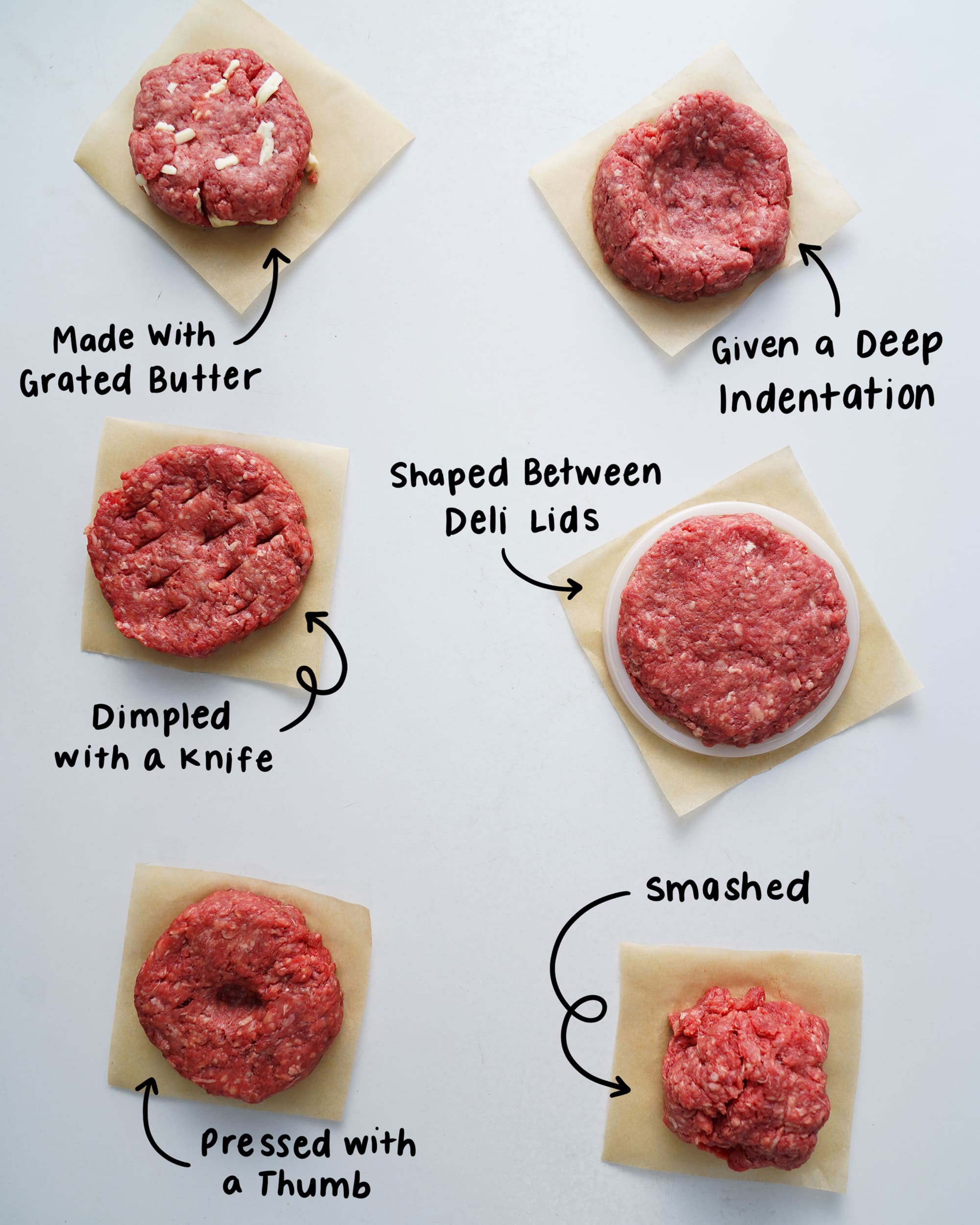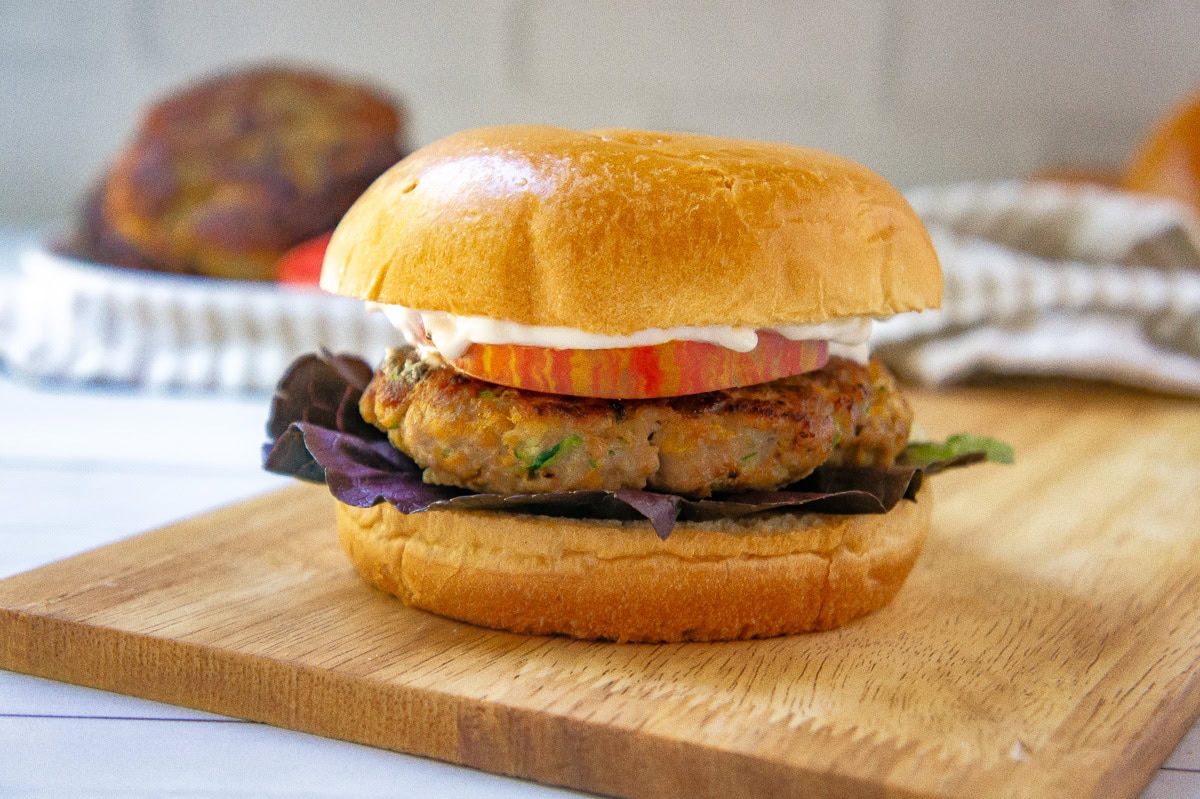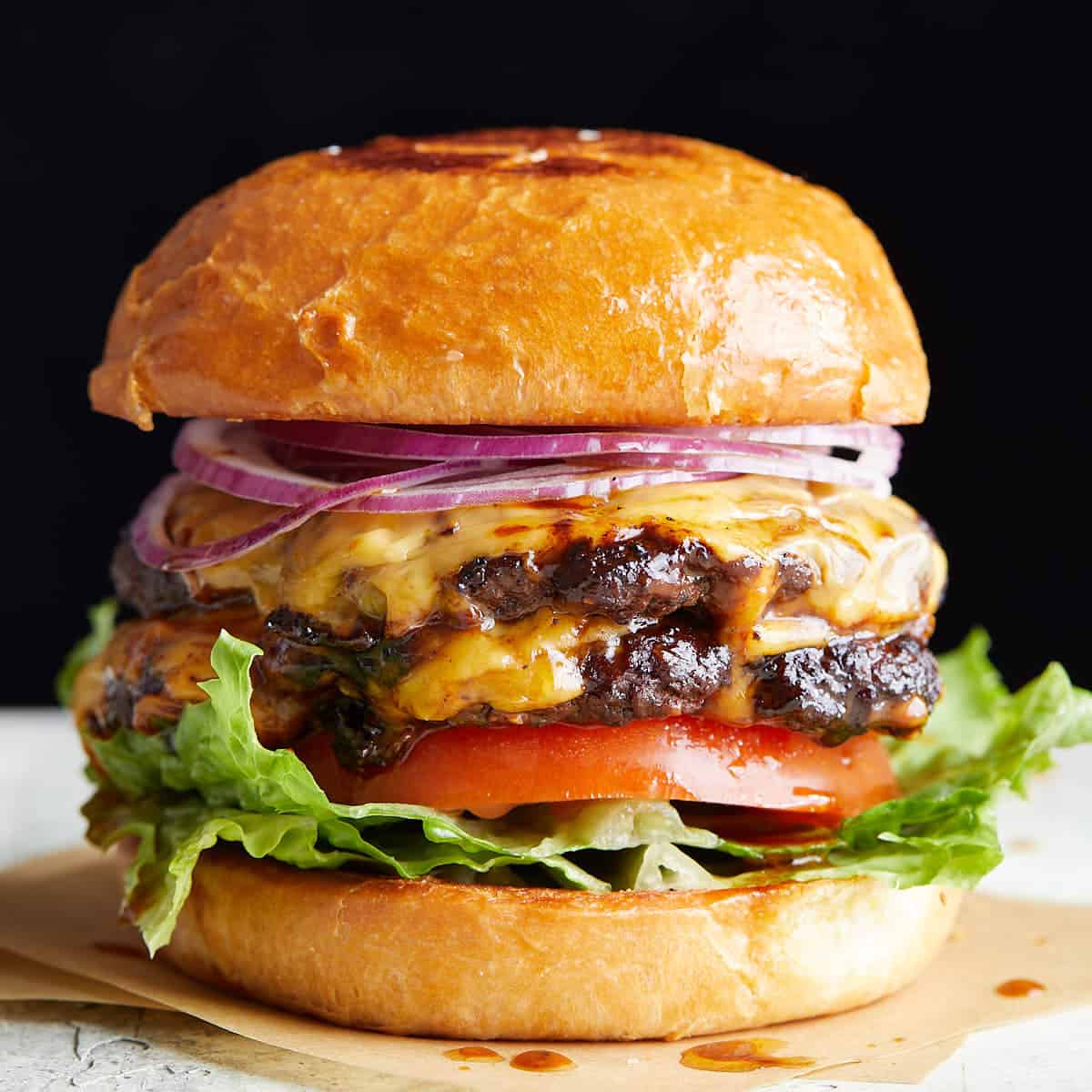
A juicy homemade hamburger stacked with fresh toppings.
Hamburgers are the ultimate comfort food—juicy, customizable, and ready in a flash. Whether you’re whipping up dinner after a long day or hosting a casual backyard gathering, quick hamburger recipes offer endless possibilities without sacrificing taste. From classic beef patties to creative twists like turkey or veggie options, these recipes can be on the table in under 30 minutes. In this comprehensive guide, we’ll explore 10 irresistible quick hamburger recipes, complete with step-by-step instructions, tips for perfection, and ways to make them healthier.
This article dives into the history of hamburgers, their nutritional perks, essential ingredients, and more. Perfect for your website, it includes internal links to related content and external resources for deeper dives. By the end, you’ll have a arsenal of fast, family-friendly meals that impress without the fuss. For more quick meal ideas, check our Easy Weeknight Dinners or Ground Beef Favorites. Externally,https://tastetrove.net/ is a great starting point.
The Fascinating History of Hamburgers: From Ancient Origins to American Icon

An illustration depicting the early days of the hamburger.
The hamburger’s story is as layered as its toppings, tracing back thousands of years before it became a fast-food staple. The concept of ground meat patties dates to ancient civilizations. In Mesopotamia around 10,000 years ago, domesticated cattle led to minced meat dishes, while ancient Romans enjoyed a version with pine nuts, pepper, and wine flavorings.
Fast-forward to the 12th century, when Mongol horsemen tenderized meat under their saddles, creating an early precursor to steak tartare. By the 1800s, European immigrants brought “Hamburg steak”—a seasoned ground beef patty—from Germany to America via ships like those from Hamburg. In the U.S., it evolved at fairs and diners. The modern burger sandwich is credited to multiple inventors: Fletcher Davis in Texas (1880s), who sold it at the 1904 St. Louis World’s Fair, or the Menches brothers in New York (1885), who claim to have placed patties between bread.
The 20th century saw explosions in popularity. White Castle (1921) introduced the slider, making burgers affordable and portable. McDonald’s (1940s) and drive-thrus cemented its status as an American icon, spreading globally. Today, hamburgers represent fusion cuisine, with variations worldwide. For more, visit our History of American Foods or History.com’s hamburger feature.
This evolution explains why quick hamburger recipes are so versatile—rooted in simplicity, they’ve adapted to modern, time-strapped lifestyles. Understanding this history adds appreciation to every bite, reminding us how a humble patty became a cultural phenomenon.
Nutritional Benefits: Why Hamburgers Can Be a Healthy Choice
Hamburgers get a bad rap as junk food, but when prepared thoughtfully, they offer surprising nutritional benefits. A standard beef burger provides high-quality protein (about 25g per patty), essential for muscle repair and satiety. Lean ground beef is rich in iron, zinc, selenium, and B vitamins like B12, supporting energy metabolism, immune function, and red blood cell production.
Toppings like lettuce, tomato, and onion add fiber, vitamins C and K, and antioxidants for heart health and digestion. Whole-grain buns contribute complex carbs and fiber, while cheese offers calcium. A balanced burger can be part of a healthy diet—around 400-600 calories per serving, depending on size and add-ons.
Opt for lean meats or alternatives like turkey (lower fat) or plant-based patties (e.g., Beyond Burger, high in protein and iron without cholesterol). Fresh ingredients boost nutrition; grass-fed beef has more omega-3s. Moderation is key—pair with salads to minimize risks like high sodium or saturated fats.
For healthier twists, see our Healthy Burger Recipes or Verywell Fit’s burger nutrition. Quick recipes allow control over ingredients, making hamburgers a nutritious, convenient option.
Essential Ingredients for Quick Hamburger Recipes

Key ingredients laid out for a simple hamburger recipe.
Stocking the right ingredients ensures hamburgers come together fast. For 4 servings of a basic burger:
| Ingredient | Quantity | Notes |
|---|---|---|
| Ground beef (80/20 lean) | 1 lb | Juicy and flavorful; substitute turkey or plant-based. |
| Hamburger buns | 4 | Whole-grain for health; brioche for indulgence. |
| Onion | 1 medium, diced | Adds moisture and flavor to patties. |
| Garlic | 2 cloves, minced | Enhances savoriness. |
| Egg | 1 | Binds patties; optional for leaner mixes. |
| Breadcrumbs | 1/4 cup | Helps hold shape; gluten-free if needed. |
| Salt and pepper | To taste | Essential seasonings. |
| Cheese slices | 4 | Cheddar or American for melting. |
| Lettuce, tomato, onion | As needed | Fresh toppings for crunch. |
| Condiments (ketchup, mustard, mayo) | To taste | Customize per recipe. |
These basics yield versatile burgers. Source fresh ground meat for safety—grind at home if possible. For variations, add Worcestershire or herbs. See Food Network’s ground beef tips.
10 Quick Hamburger Recipes: Step-by-Step Guides

Visual guide to shaping and cooking hamburger patties.
Here are 10 quick recipes, each ready in 30 minutes or less. Prep time: 10 mins; cook: 10-15 mins.
1. Classic Quick Beef Burger
- Mix 1 lb ground beef, 1 diced onion, 1 egg, 1/4 cup breadcrumbs, salt, pepper.
- Form 4 patties; indent centers.
- Grill or pan-fry 4-5 mins per side.
- Top with cheese; serve on buns with lettuce, tomato.
2. Teriyaki Ground Beef Skillet Burger
- Brown 1 lb beef with garlic.
- Add teriyaki sauce, veggies.
- Serve on buns or rice for a twist.
3. Cheese-Stuffed Hamburger
- Mix beef with seasonings.
- Stuff patties with cheese cubes.
- Cook until melted inside.
4. Turkey Veggie Burger
- Combine ground turkey, grated veggies, spices.
- Form and grill.
5. One-Pan Taco Burger
- Season beef with taco mix.
- Cook in skillet; top with salsa, avocado.
6. Grandma’s Hamburger Casserole (Burger-Style)
- Layer beef, noodles, cheese.
- Bake quickly.
7. Zucchini Beef Skillet Burger
- Mix beef with shredded zucchini.
- Pan-fry for moisture.
8. Budget BBQ Burger
- Add BBQ sauce to mix.
- Grill with onion rings.
9. Stroganoff Burger
- Top patties with mushroom sauce.
10. Veggie Patty Burger
- Mash beans, veggies, spices.
- Fry and serve.
These recipes adapt easily. For full details, link to Delish’s ground beef ideas.
10 Expert Tips for Perfect Quick Hamburgers
- Use 80/20 beef for juiciness.
- Don’t overmix patties to avoid toughness.
- Indent centers to prevent puffing.
- Season generously.
- Cook to 160°F internal.
- Rest patties 2 mins.
- Toast buns for crunch.
- Experiment with toppings.
- Freeze extras.
- Use a hot pan/grill.
See our Burger Tips Guide or Food Network’s recipes.
Creative Variations to Spice Up Your Hamburgers

Assorted hamburger variations including turkey and veggie options.
Go beyond beef: Turkey burgers with veggies for lightness, or plant-based for vegan. Add jalapeños for spice, or bacon for indulgence. Try sliders or open-faced. For ideas, our Veggie Burger Recipes or Harvard’s plant-based burgers.
Ideal Pairings: Sides, Drinks, and Serving Ideas

A complete hamburger meal with fries and fresh salad.
Pair with fries, coleslaw, or salad. Drinks: Beer, soda, or milkshakes. Serve picnic-style. See our Side Dish Ideas or Burger Republic’s benefits.
Frequently Asked Questions About Quick Hamburger Recipes
How Long Do Hamburger Patties Last?
The shelf life of hamburger patties depends on whether they are raw or cooked, how they’re stored, and the type of meat used (e.g., beef, turkey, or plant-based). Below is a detailed breakdown based on standard food safety guidelines:
Raw Hamburger Patties
- Refrigerator (35–40°F / 2–4°C):
- Freshly Made or Store-Bought: Raw patties made from ground beef, turkey, or other meats last 1–2 days in the fridge if stored properly in an airtight container or tightly wrapped in plastic wrap or foil to prevent air exposure and bacterial growth. This applies to patties made with the ingredients listed in the quick hamburger recipes (e.g., ground beef, onion, egg, breadcrumbs).
- After Purchase: If bought fresh from a butcher or grocery store, check the “use by” date. If no date is provided, assume 1–2 days from purchase unless frozen immediately.
- Freezer (0°F / -18°C or below):
- Raw patties can be frozen for 3–4 months without significant loss of quality. Wrap each patty individually in plastic wrap, then place in a freezer-safe bag or container to prevent freezer burn. Label with the date to track storage time.
- Tip: Form patties before freezing for convenience, and separate with parchment paper to avoid sticking.
Cooked Hamburger Patties
- Refrigerator:
- Cooked patties (e.g., grilled or pan-fried as in the recipes) last 3–4 days in the fridge. Store in an airtight container or wrap tightly to maintain freshness and prevent contamination.
- Freezer:
- Cooked patties can be frozen for 2–3 months. Cool completely before wrapping tightly in foil or plastic wrap and placing in a freezer bag. Reheat to an internal temperature of 165°F (74°C) for safety.
Plant-Based or Veggie Patties
- Refrigerator: Homemade veggie patties (like the bean-based option in the article) last 3–5 days if stored airtight, as they often contain vegetables that spoil faster. Store-bought plant-based patties (e.g., Beyond Burger) follow package “use by” dates, typically 5–7 days unopened.
- Freezer: Freeze for 6–12 months, depending on ingredients and packaging. Check for freezer burn, which affects texture more than safety.
Storage Tips to Maximize Shelf Life
- Refrigeration: Store patties in the coldest part of the fridge (usually the back of the lower shelf). Use shallow containers to cool quickly and reduce bacterial growth.
- Freezing: Double-wrap to prevent air exposure. For raw patties, avoid adding wet ingredients like eggs to the mix before freezing, as they can degrade texture.
- Labeling: Always date your storage containers to track freshness.
- Avoid Cross-Contamination: Keep raw patties separate from ready-to-eat foods, and use clean utensils to handle them. This is critical for ground meat, which has a higher risk of bacterial contamination due to its increased surface area.
Signs Patties Have Gone Bad
- Smell: A sour, rancid, or off odor indicates spoilage. Fresh ground meat should smell neutral or slightly meaty.
- Color: Grayish or brownish discoloration (beyond natural oxidation) suggests spoilage, especially if widespread. Discard if unsure.
- Texture: Slimy or sticky surfaces are a red flag.
- Mold: Any visible mold on veggie or meat patties means they’re unsafe.
Food Safety Notes
- Ground Meat Risks: Ground beef and turkey are more perishable than whole cuts due to processing, which can introduce bacteria like E. coli or Salmonella. Cook to an internal temperature of 160°F (71°C) for beef or 165°F (74°C) for poultry.
- Thawing: Thaw frozen patties in the fridge overnight (safest), in cold water (1–2 hours), or in the microwave (immediate use). Never thaw at room temperature to avoid the danger zone (40–140°F / 4–60°C).
- Refreezing: You can refreeze raw patties if thawed in the fridge and not held above 40°F for more than 1–2 days. Cooked patties can be refrozen but may lose texture.
Can I make ahead?
Yes, you can absolutely make hamburger patties ahead of time, which is a fantastic strategy for quick meals, meal prepping, or hosting gatherings. Preparing patties in advance saves time and enhances convenience without compromising flavor or quality, as long as you follow proper storage and handling guidelines. Below, I’ll detail how to make hamburger patties ahead, covering preparation, storage, cooking, and reheating, while referencing the ingredients and methods from the quick hamburger recipes (e.g., Classic Quick Beef Burger, Turkey Veggie Burger, Veggie Patty Burger).
Making Hamburger Patties Ahead: Step-by-Step
1. Preparing Patties for Make-Ahead
- Mixing the Patties: Follow the recipe from the article, such as the Classic Quick Beef Burger (1 lb ground beef, 1 diced onion, 1 egg, 1/4 cup breadcrumbs, salt, pepper). Combine ingredients gently to avoid overmixing, which can make patties tough. For variations like the Turkey Veggie Burger or Veggie Patty Burger, incorporate grated vegetables or mashed beans as directed.
- Tip: If planning to freeze, skip wet ingredients like eggs in the mix for veggie or lean turkey patties, as they can affect texture during thawing. Add these when ready to cook.
- Forming Patties: Shape into 4–6 equal patties (about 4 oz each for standard burgers). Make a slight indentation in the center to prevent puffing during cooking. Ensure uniform thickness for even cooking.
- Pro Tip: Use a burger press or round mold for consistent shapes, especially for meal prep or uniform presentation.
- Layering for Storage: Place parchment paper or wax paper between patties to prevent sticking. This is crucial for both refrigeration and freezing.
2. Storage Options for Make-Ahead Patties
- Refrigerator (35–40°F / 2–4°C):
- Raw Patties: Store raw patties for 1–2 days in the fridge. Place in an airtight container or wrap each patty tightly in plastic wrap or foil to prevent air exposure and bacterial growth. For example, beef or turkey patties from the article’s recipes (e.g., 80/20 ground beef or turkey with veggies) are safe for this duration if kept cold.
- Cooked Patties: If you cook patties ahead, they last 3–4 days in the fridge. Cool completely (within 2 hours of cooking to avoid bacterial growth) and store in an airtight container.
- Veggie Patties: Bean or zucchini-based patties (like the Veggie Patty Burger) may last 2–3 days due to higher moisture content from vegetables. Ensure airtight storage to maintain freshness.
- Freezer (0°F / -18°C or below):
- Raw Patties: Freeze for 3–4 months for beef or turkey patties, or 6–12 months for veggie patties (depending on ingredients). Wrap each patty individually in plastic wrap, then place in a freezer-safe bag or container with air squeezed out to prevent freezer burn. Label with the date.
- Cooked Patties: Freeze for 2–3 months. Cool completely, wrap tightly, and store in freezer bags. This works well for recipes like the Cheese-Stuffed Hamburger or BBQ Burger.
- Tip: For quick use, freeze patties in single layers on a tray for 1–2 hours before bagging to maintain shape.
3. Cooking Make-Ahead Patties
- From Refrigerated (Raw):
- Remove patties from the fridge 15–30 minutes before cooking to reach room temperature for even cooking. Cook as per the recipe (e.g., grill or pan-fry 4–5 minutes per side for beef to 160°F internal temperature, or 165°F for turkey).
- Mistake to Avoid: Cooking straight from the fridge can lead to uneven cooking; the outside may burn before the inside is done.
- From Frozen (Raw):
- No Thawing Needed: Cook frozen patties directly on a grill or skillet over medium heat, adding 1–2 minutes per side (total 6–8 minutes per side for beef). Ensure internal temperatures reach 160°F (beef) or 165°F (turkey/veggie).
- Thawing Option: For better texture, thaw in the fridge overnight (12–24 hours) or in a sealed bag in cold water (1–2 hours). Avoid microwave thawing, as it can partially cook edges, affecting texture.
- From Refrigerated or Frozen (Cooked):
- Reheat cooked patties to 165°F. Use a skillet (medium heat, 3–5 minutes), oven (350°F, 10–12 minutes), or microwave (1–2 minutes, covered with a damp paper towel to retain moisture).
- Tip: Add a splash of broth or water when reheating to prevent drying out, especially for lean turkey or veggie patties.
4. Make-Ahead Tips Specific to the Recipes
- Classic Beef Burger: Form patties with the onion-egg-breadcrumb mix and refrigerate for up to 2 days. Freeze for longer storage, but add egg just before cooking if freezing to avoid texture issues.
- Turkey Veggie Burger: Grated veggies (e.g., zucchini) release water, so prep and refrigerate for no more than 1–2 days. Pat dry before cooking if they seem wet.
- Veggie Patty Burger: Bean-based patties hold well in the fridge (2–3 days) or freezer (6 months). Add breadcrumbs or oats when ready to cook to absorb moisture.
- Cheese-Stuffed Burger: Stuff with cheese before refrigerating or freezing, but ensure cheese is sealed inside to avoid leakage during storage.
- Batch Cooking: Double the recipe (e.g., 2 lbs beef for 8 patties) and freeze half for later. The article’s BBQ or Taco Burger recipes are great for prepping in bulk due to their bold flavors holding up well.
5. Time-Saving Make-Ahead Strategies
- Prep Components Separately: Form patties and store, then prep toppings (lettuce, tomato, onions) in separate containers for up to 2 days. Assemble buns and condiments (e.g., ketchup, mayo) just before serving to avoid soggy bread.
- Meal Prep Kits: Create “burger kits” by portioning patties, toppings, and buns into meal-prep containers. Refrigerate for 1–2 days, then cook and assemble.
- Cook in Advance: For recipes like the Hamburger Casserole or Stroganoff Burger, cook patties fully, store, and reheat with sauce for a 10-minute meal.
- Freezer Meals: Freeze assembled but uncooked burgers (patty on bun with dry toppings) in foil for a grab-and-go option. Bake from frozen at 375°F for 20–25 minutes.
6. Food Safety Considerations
- Raw Meat Safety: Ground meats (beef, turkey) are prone to bacterial growth due to high surface area. Store below 40°F and cook within 1–2 days if refrigerated. Check for spoilage (sour smell, slimy texture, gray color).
- Cross-Contamination: Use separate cutting boards and utensils for raw patties to avoid contaminating toppings or cooked food.
- Reheating Safety: Reheat cooked patties to 165°F to kill potential bacteria. Discard any refrigerated patties past 4 days or with off odors.
Benefits of Making Patties Ahead
- Time Efficiency: Prep on weekends for weeknight dinners, cutting active cooking time to 10–15 minutes.
- Flavor Enhancement: Refrigerated patties (1–2 days) can develop deeper flavors as seasonings meld.
- Party Planning: For gatherings, prepped patties ensure quick grilling, as suggested in the article’s serving ideas.
- Cost Savings: Buy ground meat in bulk, form patties, and freeze to save money, aligning with the Budget BBQ Burger recipe.
Potential Challenges and Solutions
- Texture Issues: Overmixed or wet patties (e.g., from zucchini in Turkey Veggie Burger) can fall apart. Chill for 30 minutes before cooking to firm up, or add more breadcrumbs.
- Freezer Burn: Prevent by double-wrapping patties tightly. If burn occurs (dry, discolored spots), trim affected areas; the patty is still safe if stored properly.
- Flavor Loss: Frozen patties may lose some freshness. Add extra seasoning or a sauce (like the Stroganoff Burger’s mushroom sauce) when cooking.
For more, Allrecipes’ budget beef.
Master Quick Hamburgers at Home
Quick hamburger recipes blend history, nutrition, and creativity for effortless meals. With these 10 ideas, you’re set. Try our Meatloaf Variations next. Enjoy!
